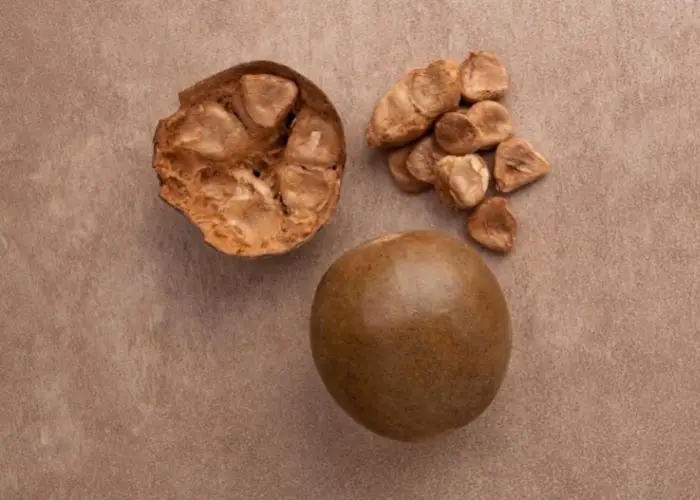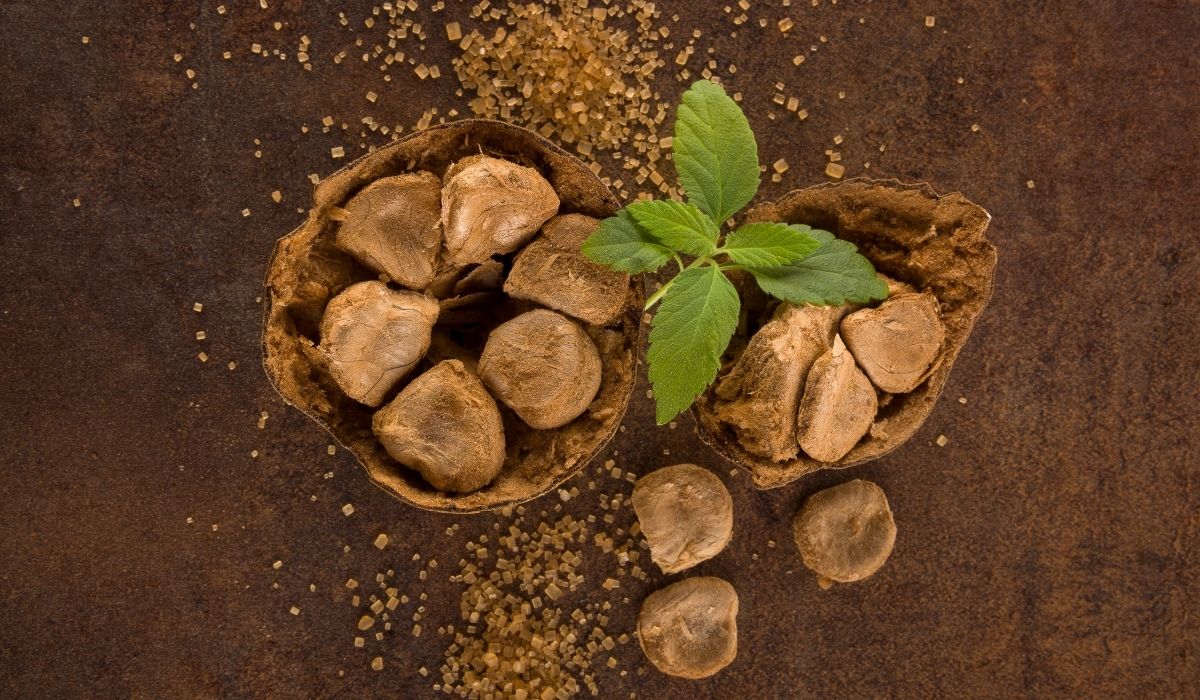This guide will teach you how to grow monk fruit in the simplest way possible and get you a good harvest.
Monk Fruit is an exotic fruit with incredibly sweet, juicy flesh and a taste that’s unlike anything else. This fruit is very easy to grow from seed and can be grown at any time of the year, even during winter. Growing monk fruit from seed is extremely easy and will only take around 6 weeks. It’s highly recommended that you start your monk fruit seeds indoors first and then transplant them into the garden once they’re big enough.
In this guide, we’ll go over everything you need to know about growing monk fruit from seed. We’ll cover everything from the best soil, to when to plant, how to water, when to harvest, how to harvest and store the fruit, and everything in between. By the end of this guide, you’ll learn how to grow monk fruit, and you’ll be well on your way to growing a bumper crop of this delicious and exotic fruit! So let’s get started!
Contents
How To Grow Monk Fruit From Seed
Step 1: Choose your seeds based on what stage you want to grow your monk fruit from. The three main options are
- Seeds from a tree: These will grow into a tree. You can buy these seeds from specialist fruit suppliers and plant them directly into the ground once they have matured.
- Seeds from a bush: These will grow into shrubs. You can buy these seeds from specialist fruit suppliers and plant them directly into the ground once they have matured.
- Seeds from a seedling: These will grow into a seedling. You can buy these seeds from specialist fruit suppliers and plant them directly into the ground once they have matured. If you want to grow a tree, then choose your seeds from a mature tree. If you want to grow a shrub, then choose your seeds from a seedling.
Step 2: Planting Your Seeds. Sow your seeds into a seed tray or pot of compost, depending on what you have available. If you choose to grow from a seedling, then sow in a plastic pot, as this will help it grow straight away. Fill your seed tray with compost, and then add your seeds. Leave the seeds for about 10 days, then water and keep watered until they germinate. Don’t worry if you see some of your seeds starting to rot, this is normal.
Step 3: Watering. Water your seedlings regularly. When they start to sprout, water them every day until they have a few true leaves, then stop watering them completely. The monk fruit is best grown when it is kept dry.
Step 4: Fertilizing. Fertilize your plants with a high-nitrogen feed once they have developed their first set of true leaves. Do this once a month for the first year.
Step 5: Harvesting. When the fruits start to ripen, cut them off the tree. You can use a pruner or a pair of secateurs to harvest the fruits. Once you’ve picked all your fruit, then store them in a cool, dry place for a few weeks.
Learn more about The Right Fertilizer For Strawberries

Care And Maintenance Of A Monk Fruit Tree
Once you have planted your monk fruit tree, it is best to take good care of it in order to encourage it to grow some of the finest monk fruits. The care and maintenance of this tree includes
Soil. Monk fruit trees are usually planted in well-drained soil that is free from stones. The soils should be well-drained to allow a good flow of water.
Watering. Water your monk fruit tree regularly during the growing season, and apply water when the tree is experiencing drought.
Fertilizing. When your monk fruit tree is growing vigorously, apply fertilizer at a rate of about 1/2 teaspoon per gallon of water.
Pruning. Prune your monk fruit tree once or twice a year in order to shape it properly and maintain a healthy appearance. Keep the area around your tree clear of fallen leaves and branches.
Take Home – How To Grow Monk Fruit
If you are new to growing fruit trees, it is best to start with an easy-to-grow fruit like apples or pears. These fruits are not very demanding, and you can plant them in any garden. On the other hand, the more demanding fruits like oranges, lemons, kiwi, grapefruits, etc., require a lot of attention and time to produce.
This is a guide you should have and keep it close if you choose to grow this fruit. Choose a suitable location for your tree. The location is very important because it has a direct impact on the yield. Monk fruit tree needs full sun but also receives enough water and fertilizer. Soil that is well-drained is needed to ensure proper growth and development of the tree. Grow the seedlings under greenhouse or grow them from cuttings. If you wish to start your own seedlings, it is best to use a small-sized pot so that the root system can grow freely without causing the roots to stick in the pot.
Choose a pot that has drainage holes at the bottom. A good rule of thumb is to keep the soil moist but not soggy.
Read more about How To Make Sugarcane Grow Faster
Frequently Asked Questions
Can you grow your own monk fruit?
Yes, monk fruit can be grown by gardeners all across America. You can buy the seeds at most nurseries or order them from Amazon or a local seed company. Once you have the seeds, it takes approximately 3 to 4 months for them to germinate and grow into plants. After that, it is another 6 months until they reach full maturity. It’s important to keep them in a warm, humid environment.
Is monk fruit hard to grow?
Monk fruit trees are relatively easy to grow. They require little care and maintenance. The average time to harvest one pound of fruit from an 8-foot tree is about 5 years. To harvest monk fruit, you need to wait until it has turned yellow and begins to fall off. It should look like a piece of fruit that’s been dropped on the ground.
Where can monk fruit grow?
Monk fruit trees grow best in areas with a tropical climate. Monk fruit trees will grow in a variety of soils as long as they have good drainage and soil that doesn’t dry out. Monk fruit trees don’t do well in areas that are too cold or too wet. In the tropics, where it is warm year-round, you can expect to get your best yields. Prices vary based on the season and location. It can be a lot cheaper if you buy it at a local farmer’s market. You can also save money by growing your own monk fruit. It takes 5-10 years before a tree will produce enough fruit to make a difference.
How do you grow monk fruit from seed?
Start by sowing the seeds in a container or directly in the soil and wait for them to germinate. At the seedling stage, you can opt to transfer it or let it grow in its initial place.
A garden is a place that relaxes us and reflects our personal style, it’s a place to spend time with loved ones and grow our own fruits and vegetables. Maybe you’re looking for design inspiration or plant selection, or you’re concerned about garden privacy, shady areas, or pests, but don’t worry, you’ve come to the right place.
